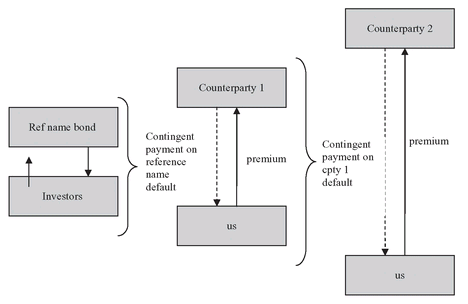26
Counterparty CDSs
26.1 PRICING
In Part II we looked at variable exposure CDSs - related to interest rate swap or foreign exchange exposures. We now wish to consider default protection on the counterparty to a trade, from another counterparty. This might include protection on the exposure under an interest rate swap with a counterparty C1, or protection on the mark-to-market exposure arising on a CDS on a reference name
N written by a counterparty C1, where we wish to obtain protection from counterparty C2. In the former case there is (assumed to be) correlation between the two counterparties only. In the latter case there are three correlated entities (see
Figure 26.1).
The former case has been covered theoretically in section 25.3. The only material difference is the variable exposure under the default swap and the counterparties to this trade are likely to be highly correlated - typically banks or wider financial institutions such as insurance companies and hedge funds. The latter case is a three name portfolio. If the trade arises because C1 is ‘risky’ but C2 is a high-quality counterparty, then we may ignore the C2 risk and the deal becomes a variable exposure CDS with C1 counterparty risk.
In the general case, if we think of correlated default times generated under the Normal model then:
1. We may wish to use a two-factor ...


